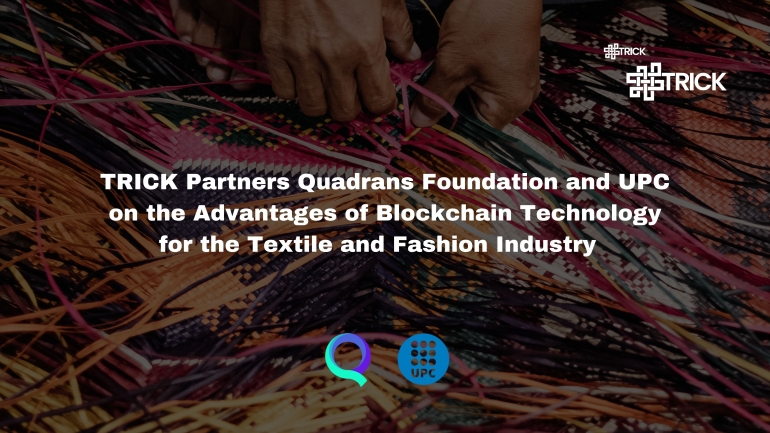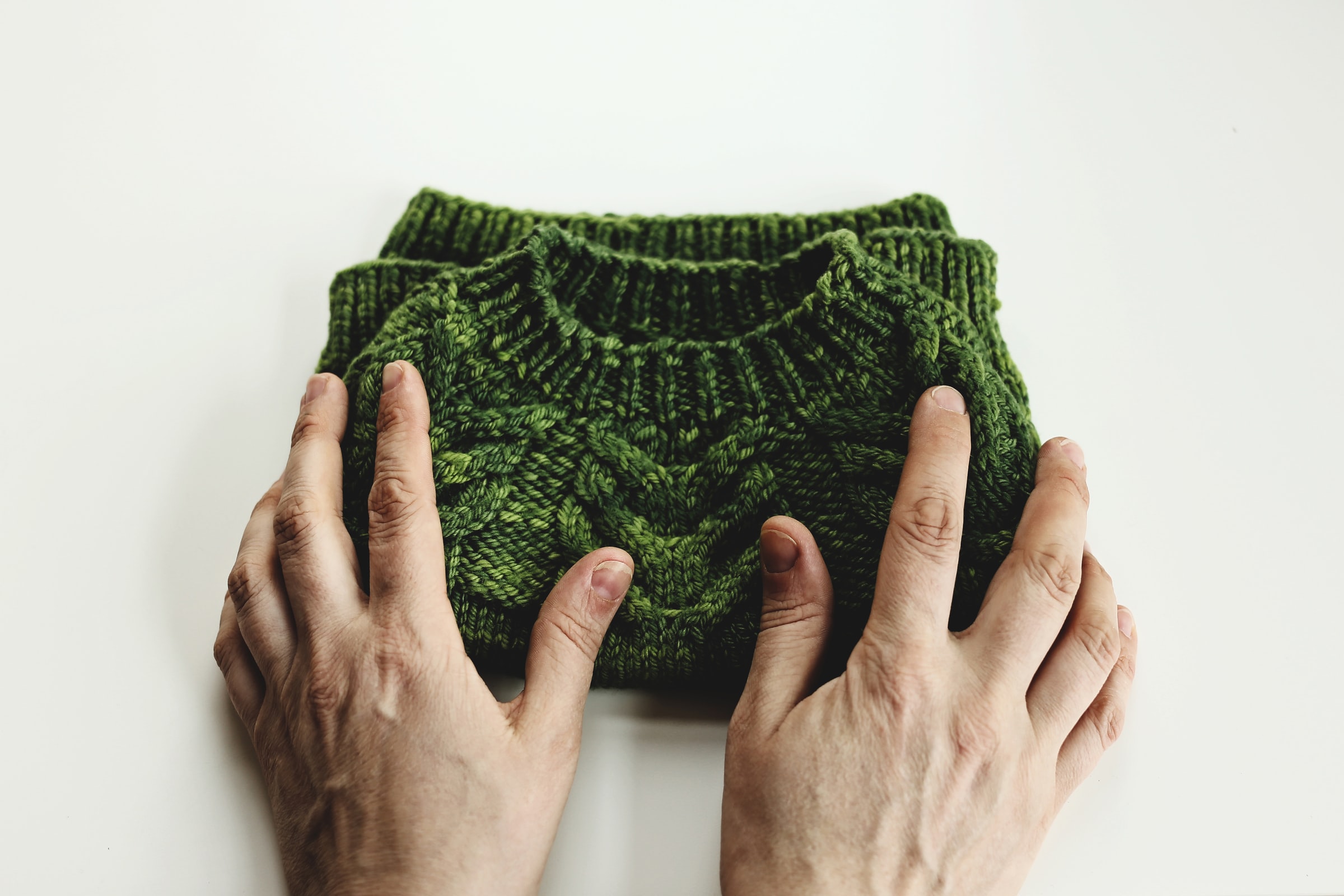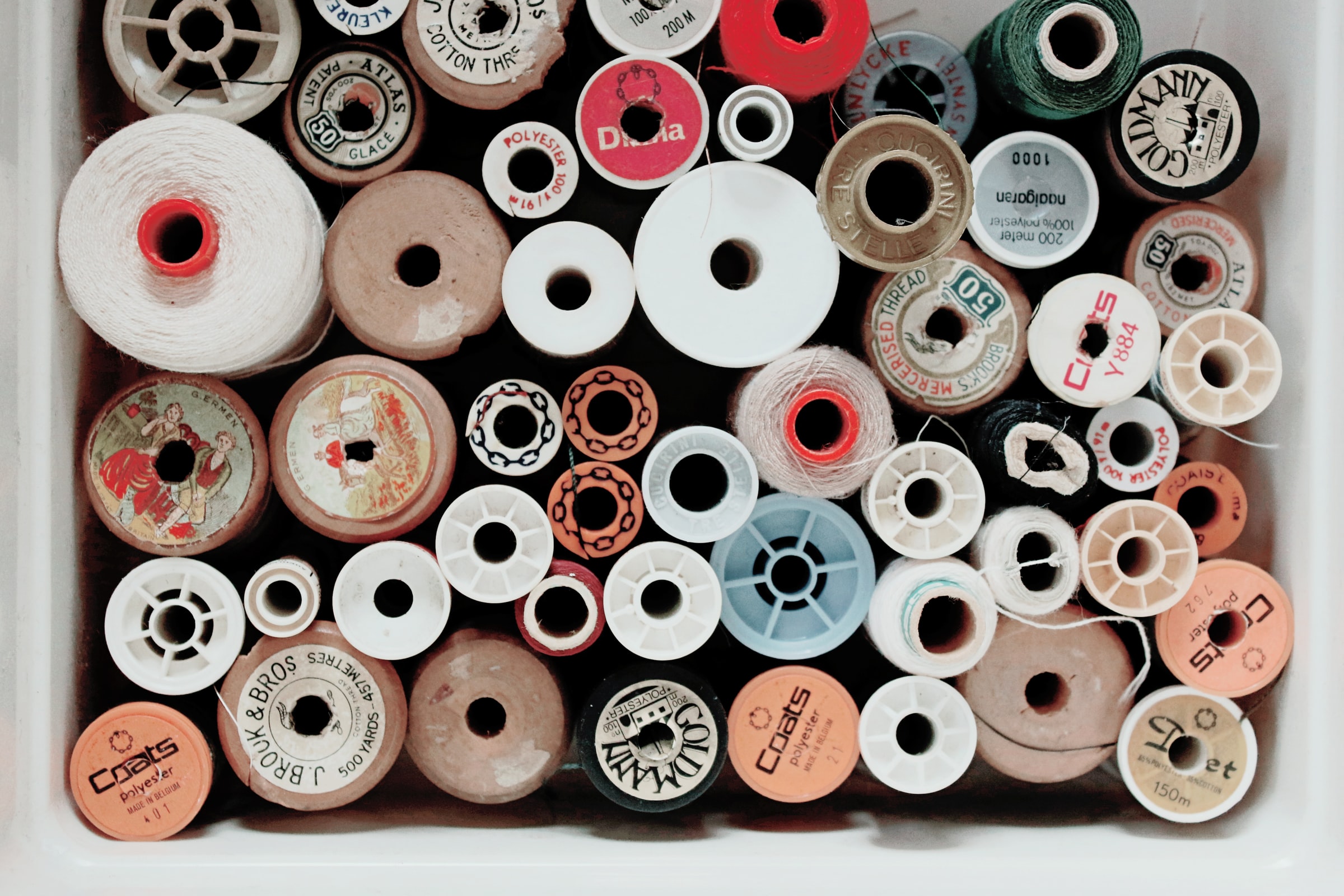TRICK Partners Quadrans Foundation and UPC on the Advantages of Blockchain Technology for the Textile and Fashion Industry

Advantages Of Blockchain Tech For Textile (Credits: QuadransUPC)
At the heart of the TRICK Project is a shared desire to facilitate the transition toward an increasingly circular model, providing a complete, reliable, SME-affordable, and standardised platform to support the adoption, tracing, and demonstration of sustainable and circular approaches in the Textile & Food sector.
The TRICK platform will use Blockchain technologies to become a standard for the entire European industry, demonstrating its ability to manage product data securely and reliably.
In this article, TRICK’s Consortium members Quadrans Foundation, as Blockchain provider, & UPC-INTEXTER as textile institute research partner will shed light on the perks that Blockchain technology can bring to the value chains – not only to the stakeholders but also to the final consumer – starting with a simple definition of what Blockchain is.
Blockchain for the Textile Industry
The Blockchain is an innovative and decentralised system for storing information/data. It can be compared to a database shared among multiple users and stored identically on multiple machines that create the Blockchain network. Three characteristics make the Blockchain unique:
✔ Decentralisation. The information is stored identically on multiple machines.
✔ Consequentiality. The information is always entered and recorded sequentially;
✔ Immutability. The information entered cannot be changed or deleted.
How can these features be leveraged to overcome the major challenges the textile sector currently faces? Counterfeiting, lack of visibility and trust in the supply chain, lack of transparency, and vague information about sustainability practices – textile supply chains are often long and opaque.
- Fight Product Counterfeiting with Product Traceability

Product Traceability (Credits: QuadransUPC)
Nowadays, no sector is unscathed by counterfeiting, and the world of Fashion is clearly among the hardest hit, with estimates quantifying damages in the billions.
One way to actively address counterfeiting is to ensure full and complete traceability of products within the textile supply chain. Sequentially storing data in Blockchain makes it possible to geolocate the stages of creation, processing, and distribution of products in order to certify their origin and provenance.
The Blockchain connects all the information of the value chain, it crystallises it and made it available to any stakeholders, including the end consumer, in order to verify.
- Support Sustainability Practices

Sustainability (Credits: QuadransUPC)
Blockchain can play an important role in promoting supply chain sustainability. Green and more sustainable options are advertised to consumers in almost every purchasing decision. What consumers are not always aware of is that these products may not be as environmentally friendly as the companies claim.
“Greenwashing” is a phenomenon in which companies exaggerate or lie about their claims to deceive and encourage consumers to buy their products – activating an affective persuasive mechanism that appeals to consumers' affinity for nature, and positively influences their evaluations of ads and brands.
Blockchain technology represents a shared digital ledger in which all the players in the supply chain can store data securely and reliably, as it is impossible to change, alter or delete information once it has been entered.
- Improve Supply Chain Transparency

Transparency (Credits: QuadransUPC)
Trust and reliability of data are the keys to a more transparent supply chain. Blockchain solutions can counter inefficiency, opacity, and fraud in supply chains in need of digitization, simplifying the value creation process and making collaboration easier.
Decentralisation and data immutability make Blockchain technologies really appealing when a common database is needed to strengthen trust through the transparency of shared information.
With Blockchain technology, transparency is rewarded within the supply chain, in which the input and best practices of each of the actors in the chain become crystal clear – from the field where the raw material is grown to make a garment, to the store shelf where the item is purchased.
What’s next?
With the support of all 32 international members of the Consortium, today the TRICK platform has reached a crucial stage of development.
The development phases began in September 2021 and will last for another 18 months. Three pilots (two for clothing and one for food) will be presented to validate the platform's functioning and data management.
CONTACT PERSON & EMAIL ADDRESS:
LINKS:
- Blog Post "Quadrans Foundation to provide the Blockchain Technology Infrastructure for TRICK" (link)
-
The Institute for Textile Research and Industrial Cooperation of Terrassa, academic unit of the UPC, participates in the TRICK project as Administrative Coordinator and Technical Manager of the Use Cases Requirements (link)